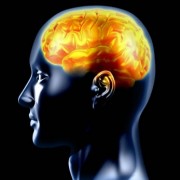A Menzies Research Institute study, recently published in the international neuroscience journal Cerebral Cortex describes how nerve cells change their structure in response to the trauma.
About one Australian in 45 has acquired brain injury.
Two out of three of these people will acquire their brain injury before they turn 25 years old. Three out of every four people with acquired brain injury are men.
In Tasmania it is estimated that each year 2,500 people acquire a brain injury.
Common causes of ABI include traffic accident, assault, hypoxia, tumour, sporting injury, substance abuse, medical misadventure and infection or degenerative neurological diseases.
It was estimated by the Tasmanian Government that the cost of an 18 year old male with ABI (as a result of car crash) will be $12 million in care, support and medical fees over the person’s lifetime.
Menzies’ Senior Research Fellow, Dr Tracey Dickson says that accumulating evidence indicates that damage to the adult brain causes an array of cellular responses and that the brain may retain a capacity for structural changes and some degree of healing.
“These studies demonstrate a novel neuronal response to traumatic brain injury,” Dr Dickson said.
“Our data suggests that the cerebral cortex (the brain’s outer layer of grey matter surrounding the cerebrum) is capable of significant remodelling following injury, specific to neuronal type,’ she said.
Menzies’ PhD student, Ms Catherine Blizzard says there are 2 types of neurons in the cortex – pyramidal neurons and interneurons.
“We looked at both types and found that pyramidal neurons attempt axonal regeneration into the injury site, whereas interneurons reorganised their processes away from the injury site to undamaged areas of the cortex,” Ms Blizzard said.
“Interestingly, our studies demonstrate that neurons in the adult brain have an unappreciated capacity for remodelling away from the actual injury, and that these neurons are attempting to rewire the brain following an injury.”
These distinct responses exhibited by different neurons, provide insight into the potential of the mature brain for plasticity or remodelling,” she said.
These studies are the first to describe how natural brain remodelling and healing may improve an outcome after acquired forms of brain injury. The research team is trying now to identify ways in which this healing response can be encouraged, which could form the basis of new therapies.
Source: University of Tasmania

